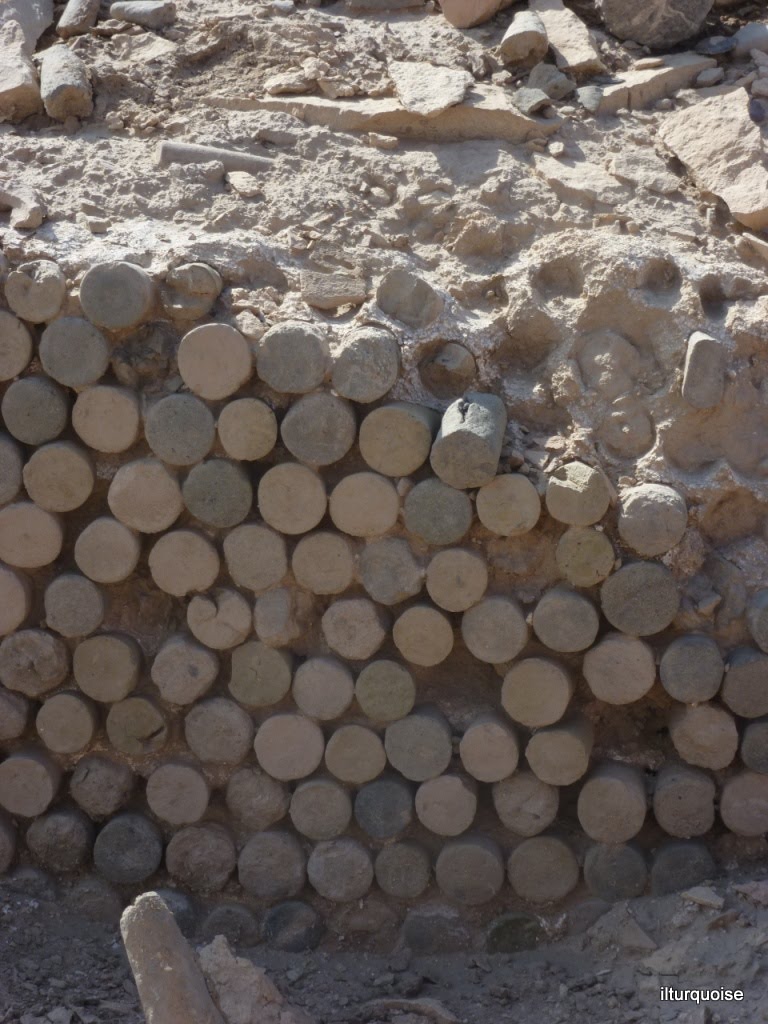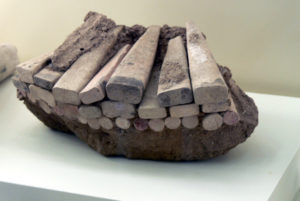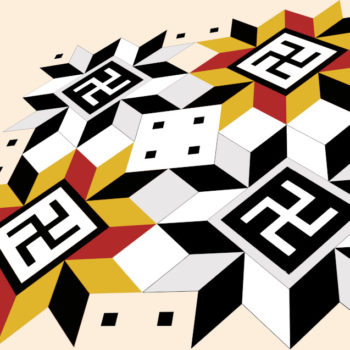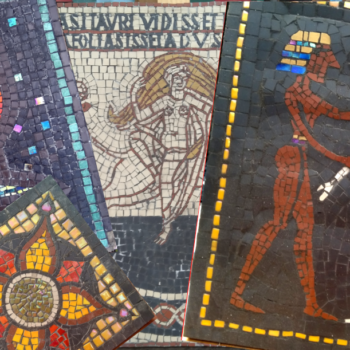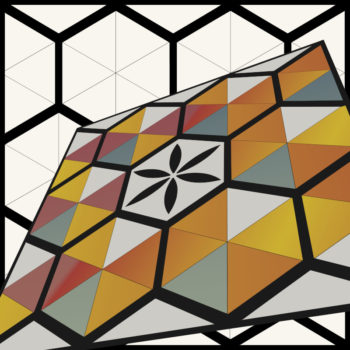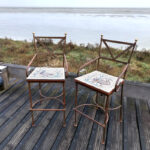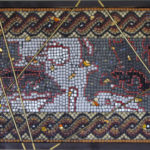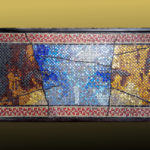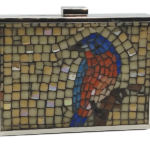Cone mosaics are the oldest known mosaics in the world
They were used in Southern Mesopotamia (present day Iraq) to decorate monumental raw mud-brick Palaces and Temples built between 3500 and 3000 BC.
Baked clay cones for tesserae, plaster as thinset.
Cone mosaics were built with small cones made of baked clay. Sumerian builders pressed them pointed end first into a wall coated with a thick layer of wet plaster. The flat ends of the cones were painted black, red, and white. (always the same colors !)
Cones of different shapes
Most of the cones had circular bases (Circular clay cones are very easy to shape by hand). However, the Sumerians sometimes used different shapes with elongated or hollow base.
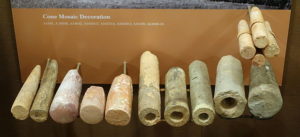
Some of the most impressive examples of cone mosaics are found at Uruk but this technique of decoration has also been found in many other cities such as Ur and Eridu in lower Mesopotamia as well as sites like Habuba Kabira much higher on the Euphrates river in modern Syria.

Geometric patterns
Although Sumerian art produced amazing realistic pieces, I do not know of any example of figurative designs realized in cone mosaics. Actually, regular geometric shapes are very easy to build from circles by methodical repetitions.
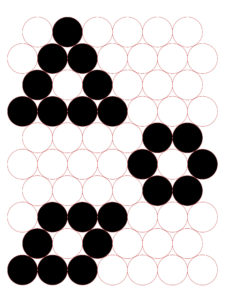
After all, the Sumerians invented mathematics…
The decorative patterns were basic geometric shapes : lozenges, triangles, and straight and zigzag bands.
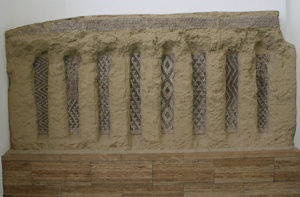
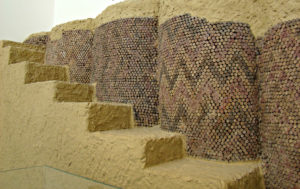
It has been suggested that such designs were possibly based on patterns found in wickerwork and textiles.
Protection against the weather
Very little stone was available to the Sumerians. But clay and dirt were available in vast amounts between the 2 rivers. Most of their buildings were built of raw mud bricks. Winters can be wet and windy in lower Mesopotamia. The cones made of hard baked clay were an excellent protection against erosion from wind, sand and water.

